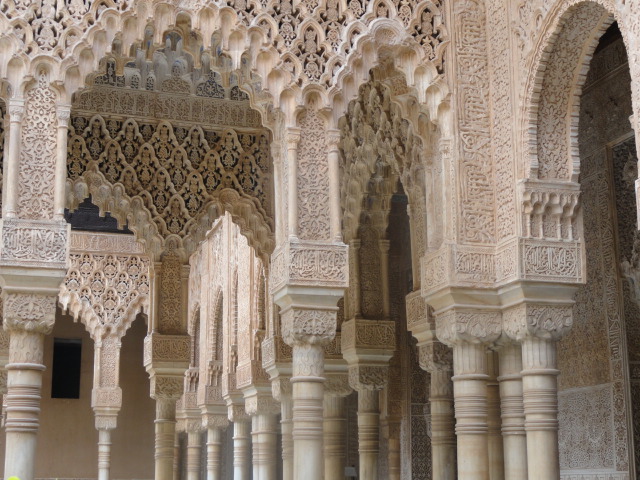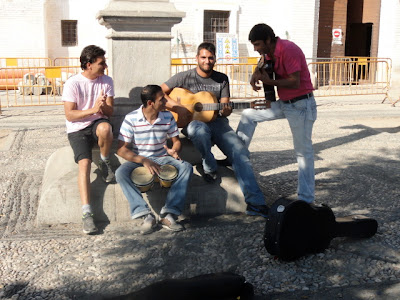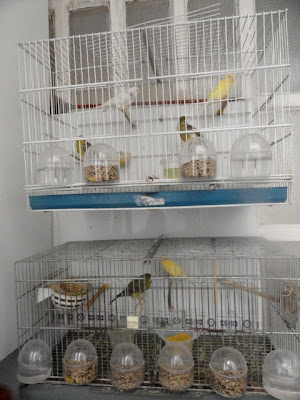Catedral de Sevilla
Last Wednesday I had school off for Columbus Day (Día de la Raza or Fiesta Nacional), which also happens to be the feast day of Fiestas del Pilar, patron saint of Spain (or just Aragon, I can’t quite figure that one out). I spent most of the day walking around the city exploring, and that evening I wandered into a church that I had only ever seen the outside of until that night. I think it’s called Basilica of Angustias. I don’t think it’s just my own obsession with religious architecture and monotheism; it was difficult to breathe in this chapel simply because it was so beautiful. I sat down and looked around for a long time. When I lay down on a pew to look at the ceiling, a little old lady who had been sitting and praying a few rows behind me came over just to tell me I ought to sit up (‘¡estamos en una iglesia!’). Then she sat down again next to me, I guess just to be sure I wasn’t up to any more funny business.
I don’t think she had ever taken a good look at the ceiling.
Everywhere I explore, this country impresses me with an inexplicable transience. I feel as if I have visited here before; as if I have re-awoken into a dream from long ago. I can’t believe that I wandered into a 400 year old church before mass, I can’t believe that I saw Guernica (even bigger than I imagined it) in the flesh, or that I was sitting in the living room just a few nights ago, watching a newscast about the ETA ceasefire in Spain, in Spanish. Each time I find a bidet nestled in a private bathroom, I wonder for the millionth time if anyone actually uses these things, and if it is really true that I am right here, right now. Perhaps it is ridiculous of me, to treat this experience as if I had discovered an alternate universe, but I’d rather be a little silly and over appreciative, than forget how extraordinary life is. There is a girl in my program, I don't know her very well, but I am in love with her thoughtful and sincere attitude. We will be driving down the road when she climbs up in her seat and shouts to the entire bus to call our attention to a sunset or some cool ruins (You guys, are you seeing this?). She practically sings; ¡Estamos en España! (We are in Spain!), when we reach a particularly breathtaking lookout point. She's right. We are in Spain and we are young and in the world.
Abandoned church in Las Alpujarras.
In Spanish, there are two forms of the verb "to be", ser and estar. Ser describes permanent characteristics, the essence so to speak, while estar is used for provisional states. To say "I am alive" you use estar: "Estoy vivo", because life is transient. The truth is that I love old people, and I believe in being respectful of all places of worship, but I was rather disappointed that I wasn't allowed to lie on my back and gaze at the ceiling of the basilica. I believe we ought to grant ourselves every opportunity to marvel at our own reality. We must remember that we are alive and that such a condition is a privilege, if we want to be truly self aware. I confess it's easy to forget how impermanent and precious it all is, but I've discovered that new experiences like Spain deepen my perspective and heighten my sensitivity to life.
The sight of my castigation, can you believe such magnificent places exist?




























